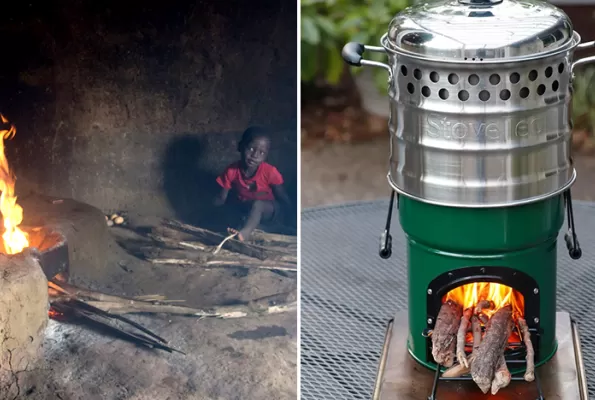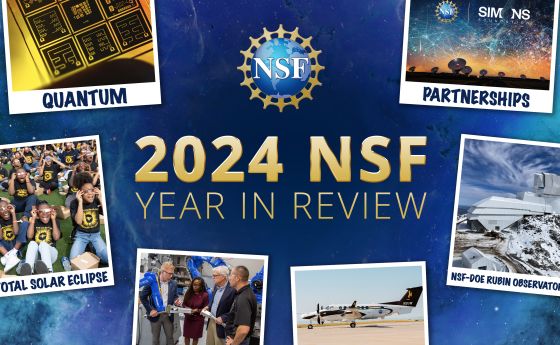
Building a better cookstove
NSF-driven work in developing world has broader applications
Across the developing world, daily cooking responsibilities are largely held by women and girls who cook — often indoors — on open fires fueled by organic matter like wood or dung. From airy thatched huts in Uganda to snug stone homes high in the Andes, those fires are billowing smoke that they and their neighbors breathe in.
Inhaling that smoke has a stunning impact: According to the Clean Cooking Alliance in Washington, D.C., up to 4 million people die prematurely every year because of household air pollution. For women globally, it's the second-most common cause of death. Pregnant women exposed to indoor cook smoke are at greater risk for stillbirths and giving birth to babies with low birth weight.
For years, Nordica MacCarty, an engineering professor at Oregon State University, has worked to address this issue, helping design more efficient cookstoves and persuading reluctant communities to adopt them. MacCarty helps lead the university's Humanitarian Engineering and Design for Social Impact programs and heads the nonprofit Aprovecho Research Center, which aids the developing world in testing and improving wood-burning cookstoves.
According to Kathryn Jablokow, program director for the U.S. National Science Foundation’s Engineering Design and Systems Engineering program, MacCarty’s work could also help empower underserved communities in the U.S. and restore equity, reinforce climate action and promote new principles for co-design, especially with women.
Different cultures, different cooking
While MacCarty was a student, a former professor enlightened her about polluting biomass cookstoves in the developing world, like traditional three-stone fires and mud stoves. The problem with traditional open-fire cooking is that not enough air gets to the fire. It doesn’t get hot enough, so instead of a clean flame, it produces smoke and carbon monoxide.
For the past 20 years, MacCarty and Oregon State researchers have been helping to develop technologies capable of burning wood more efficiently and cleanly. These stoves have an insulated combustion chamber where the fuel is mixed with air, smoke is kept in a confined space, and the emissions burn more completely before they exit.
But the technology issue is only half of the equation that needs to be solved. It can be a multifaceted challenge to convince people to embrace the new and unknown.
"We're finding that there are a lot of conflicting objectives between what people who have the funds want to see, like improving health, reducing climate change and relieving pressure on forests, and the objectives of the users, which are, 'I want to cook my food fast, I want to use a little bit of wood, and I want to prepare the meal in the same way that my family has been doing for generations,'" said MacCarty.
With support from NSF, MacCarty and her graduate students have partnered with nonprofits and other organizations in developing countries to help foster adoption across the varied regions and cultures to adopt this new method.
"There are so many different cultures and cooking practices and fuel availability that vary from culture to town to country, so there's no one-size-fits-all solution," MacCarty said. "The model that works best is to have an organization that works in the community designing stoves specifically for that community with a lot of input from cooks in that community."
In Uganda, for instance, she helped improve the International Lifeline Fund's locally designed and manufactured "rocket stove," or wood-burning cook stove.
It also helps to have buy-in from local influencers, she said, "because adoption's often not a technical problem, it's a social problem." In one village, for instance, the local chief was excited about the new stoves and convinced the village women to begin using them to clean up the air and reduce fuel consumption in their community.
'People are just as important as the technology'
MacCarty has developed a protocol for evaluating the usability of cookstove designs that incorporates emissions, efficiencies and user perspective. The protocol has been widely shared and is included in the International Organization for Standardization for cookstove tests. She also developed a fuel sensor that can quantify fuel savings in households to qualify for carbon credits — a primary incentive for cookstove financing.
What MacCarty has learned on the local level can be scaled to address broader issues through a modeling framework she developed that achieves a balance between design and adoption. Her model emphasizes examining what drives consumers to adopt products that protect common resources rather than continue with current inefficient or polluting methods. It looks at how designers can create products that encourage adoption despite social and financial barriers.
The methodologies are also useful more broadly for products and services aimed at generating beneficial health or environmental outcomes, MacCarty said. For example, encouraging consumers to switch from gasoline to electric vehicles involves consideration of their attitudes toward electric vehicles, their perceptions on how easily they might alter their fueling and driving patterns to accommodate range and charging needs, and the social norms in their communities around adopting "greener" options. Understanding these aspects in user groups can help to design targeted messaging and subsidy options, as well as ensure that the technology itself meets the stated needs of different users.
A detailed understanding of the factors that drive consumers to adopt or reject environmentally sound or health-promoting behaviors is required to generate optimal designs for technologies and services that appeal to users and meet their needs.
This inclusive, interdisciplinary, people-centered approach is one reason many of MacCarty's students earn dual degrees in both mechanical engineering and applied anthropology.
And this translational, people-focused approach is a critical part of NSF's mission, Jablokow said, representing a view of engineering that NSF enthusiastically supports. "How can we help designers think about things that are far beyond the initial stages of the design process?" Jablokow said. "Spanning everything from conceptual design to prototyping to testing to manufacture to distribution, all the way out to the supply chain.
"But we need to go even further than that. We need to ask, as we're designing something, where's it going? Who's going to use this? Who's our audience? And, most importantly, what's the world like for those people?"
MacCarty and NSF engineers believe her framework could be applied to bolster public acceptance of engineered products in the U.S. and around the globe, from electric vehicles to smart appliances. But it could also be used to encourage people to adopt more healthful behaviors like quitting smoking or bicycling instead of driving. And it could aid in designing and engineering products right from the start so they're more likely to gain public acceptance.
"Nordica is promoting and empowering these women to make choices based on their own understanding," she said. "Her work shows we can bridge that gap and reminds us that the people are just as important as the technology."



